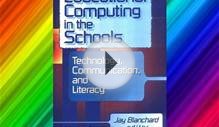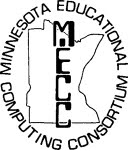
The goal of this Journal is to provide an international scholarly publication forum for peer-reviewed interdisciplinary research into the applications, effects, and implications of computer-based education. The Journal features articles useful for practitioners and theorists alike.
The terms "education" and "computing" are viewed broadly. “Education” refers to the use of computer-based technologies at all levels of the formal education system, business and industry, home-schooling, lifelong learning, and unintentional learning environments. “Computing” refers to all forms of computer applications and innovations - both hardware and software. For example, this could range from mobile and ubiquitous computing to immersive 3D simulations and games to computing-enhanced virtual learning environments.
Editor-in-Chief
Associate Editor
Reviews Editor
Associate Editor for Special Topic Series
Editorial Board
- EBSCO: Computer Source
- EBSCO: Computers and Applied Sciences Complete
- EBSCO: Educational Administration Abstracts
- EBSCO: IET Inspec
- EBSCO: OmniFile Full Text Mega
- EBSCO: Professional Development Collection
- ERIC (Education Resources Information Center)
- Gale: Academic OneFile
- ProQuest: CSA Sociological Abstracts
- ProQuest: Linguistics and Language Behavior Abstracts (LLBA)
- PsycINFO
- SCOPUS
- Taylor & Francis: Educational Research Abstracts (Online)
- Thomson Reuters: Current Contents - Social & Behavioral Sciences
- Thomson Reuters: Social Science Citation Index
- Instructions to Authors
Manuscripts can be submitted in APA style to: .
Executive Editor
Originality: Authors should note that only original articles are accepted for publication. Submission of a manuscript represents certification on the part of the author(s) that neither the article submitted, nor a version of it has been published, or is being considered for publication elsewhere.
Abstracts of 100 to 150 words are required to introduce each article.
Format: Prepare manuscripts according to the latest Publication Manual of the American Psychological Association. A synopsis of this manual is available from the American Psychological Association.
Footnotes are placed at the bottom of page where referenced. They should be numbered with superior Arabic numbers without parentheses or brackets. Footnotes should be brief with an average length of three lines.
Figures should be referenced in text and appear in numerical sequence starting with Figure 1. Line art must be original drawings in black ink proportionate to our page size, and suitable for photographing. Indicate top and bottom of figure where confusion may exist. Labeling should be 8 point type. Clearly identify all figures. Figures should be drawn on separate pages in the manuscript document and their placement within the text indicated by inserting:
-Insert Figure 1 here-
Tables must be cited in text in numerical sequence starting with Table 1. Each table must have a descriptive title. Any footnotes to tables are indicated by superior lower case letters. Tables should be typed on separate pages in the manuscript document and their approximate placement indicated within text by inserting:
INTERESTING VIDEO

![[PDF] Educational Computing in the Schools: Technology](/img/video/pdf_educational_computing_in_the_schools.jpg)


 The Minnesota Educational Computing Consortium (later Corporation), most commonly known as MECC, was an organization founded in 1973. The goal of the organization was to coordinate and provide computer services to schools in the state of Minnesota; however, its...
The Minnesota Educational Computing Consortium (later Corporation), most commonly known as MECC, was an organization founded in 1973. The goal of the organization was to coordinate and provide computer services to schools in the state of Minnesota; however, its...








